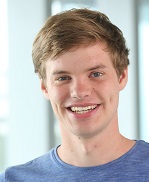Research Area Design - D1:Process simulation and process-oriented optimization
CoDiCoFRTS process simulation
Advisors: Kärger (FAST), Henning (FAST), Hrymak (UWO)
The combination of SMC and continuous patches poses a fluid-structure interaction problem with the additional challenge of complex individual material models. Therefore, the draping simulation of patches will be enhanced from a kinematical process to a FE based simulation, in order to account for large strains. The first generation’s rheological findings on SMC will be formulated in a consistent three-dimensional model, and robustly implemented (in cooperation with PostDoc and Wilhelm). Possible model extensions include the anisotropic modeling of viscosity and variable fiber volume fractions (C2) to account for separation effects at ribs. The patch-mold interface and its frictional characterization poses an additional crucial task to predict patch displacements and the consequences on the bulk material flow accurately. The integrated model shall enable the prediction of manufacturing effects such as fiber orientation (C2), patch deformation (T1) and curing (PostDoc), and their influences on the overall part performance in terms of stiffness and warpage. If these aspects can be predicted reliably and relatively fast, an outer process optimization may be utilized to find optimal process settings, e.g., the position of initial charge, in the sense of a quality loop (T3).
Figure: Bundles in a cube experience shear (top row) and compression of a cylinder (bottom row)
with bundle induced anisotropic flow.

